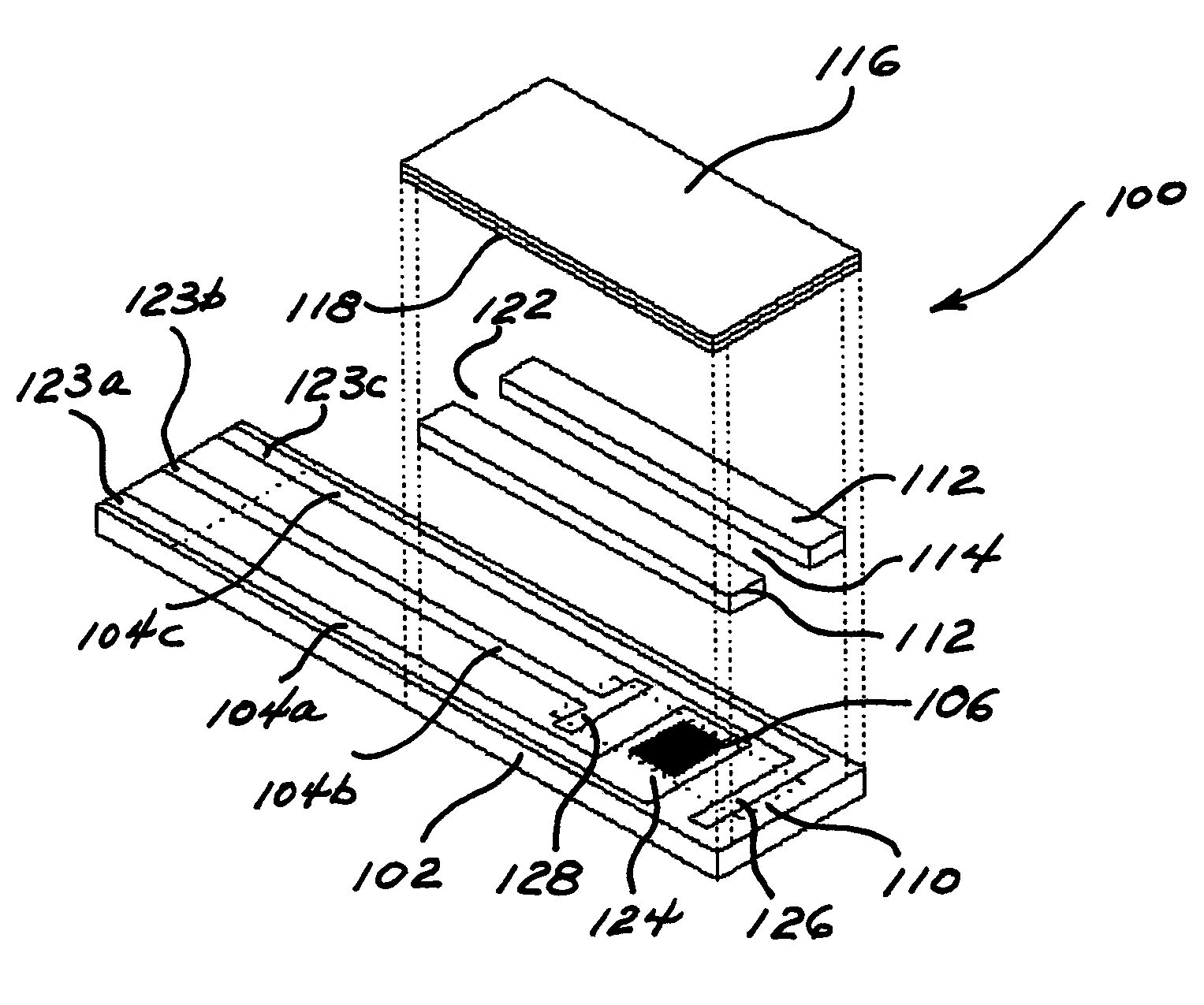Device having a flow channel containing a layer of wicking material
a technology of flow channel and wicking material, which is applied in the direction of sedimentation separation, enzymology, biomass after-treatment, etc., can solve the problems of slow uptake of viscous fluid, e.g., whole blood, and time-consuming steps of applying a layer of mesh,
- Summary
- Abstract
- Description
- Claims
- Application Information
AI Technical Summary
Benefits of technology
Problems solved by technology
Method used
Image
Examples
example 1
[0076]This example illustrates the preparation of a sensor in the form of a strip according to this invention. The sensor strip of this example is shown in FIGS. 1, 2, and 3.
[0077]Carbon tracks are applied to a base layer made of poly(vinyl chloride) (PVC) by means of a screen-printing technique. The carbon tracks define the position of the electrodes within the reaction site, which includes the reference electrode, a dual-purpose counter / trigger electrode, and working electrode. The counter electrode also functions as a trigger electrode. The assay begins when the sample contacts the dual-purpose counter / trigger electrode. The carbon tracks also define the position of the contacts. A layer of electrically insulating material can be printed over carbon tracks, leaving the defined reaction site exposed. The layer of electrically insulating material is characterized by having a portion cut therefrom to create electrical contacts that can be inserted into a meter for measuring the reac...
example 2
[0080]In this example, the sensor of Example 1 is prepared, with the exception that a mixture of silver and silver chloride is printed on the track leading from the working electrode to reduce the resistance along that portion of the track.
example 3
[0081]In this example, the sensor of Example 2 is prepared, with the exception that a reagent layer is printed on the working electrode. This optional reagent layer comprises an enzyme, a mediator, an optional binder, and an optional filler.
PUM
| Property | Measurement | Unit |
|---|---|---|
| thickness | aaaaa | aaaaa |
| thickness | aaaaa | aaaaa |
| width | aaaaa | aaaaa |
Abstract
Description
Claims
Application Information
 Login to View More
Login to View More - R&D
- Intellectual Property
- Life Sciences
- Materials
- Tech Scout
- Unparalleled Data Quality
- Higher Quality Content
- 60% Fewer Hallucinations
Browse by: Latest US Patents, China's latest patents, Technical Efficacy Thesaurus, Application Domain, Technology Topic, Popular Technical Reports.
© 2025 PatSnap. All rights reserved.Legal|Privacy policy|Modern Slavery Act Transparency Statement|Sitemap|About US| Contact US: help@patsnap.com



